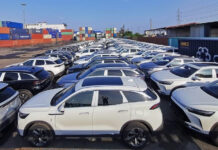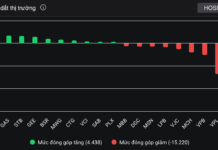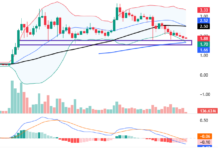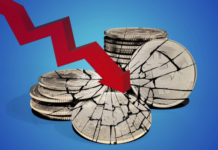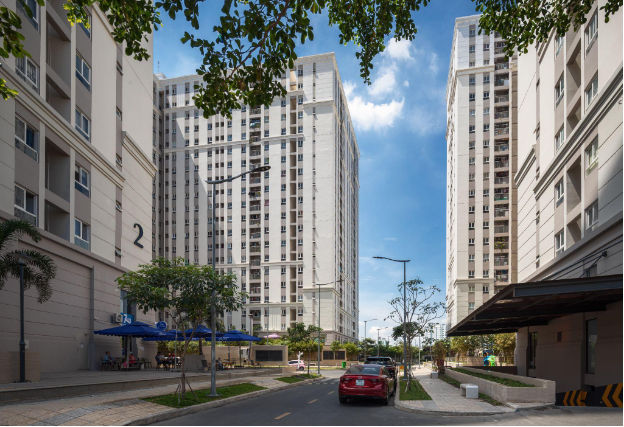The race to net-zero emissions is on, and the construction industry is under pressure to reduce its carbon footprint. This technology, ranging from advanced laboratories to commercial-scale pilot projects, ushers in a new chapter in the global green building revolution.
Why has the trend towards carbon-negative building materials gained global traction?
The construction industry faces a stark reality: despite numerous emission reduction commitments, progress has been slow. According to the UNEP, 2023 marked the first year since 2020 that greenhouse gas emissions from the construction sector did not increase, despite continued construction activity. The industry consumes approximately 32% of global energy and contributes 34% of total global emissions. While this stabilization is positive, more needs to be done to achieve the target of reducing emissions by 4% annually.
At COP28, nations issued a “clear call to shift away from fossil fuels,” along with frameworks for the Global Goal on Adaptation and new commitments on sustainable cooling, methane reduction, and tripling renewable energy targets.
Vietnam pledged to achieve net-zero emissions by 2050 at COP26 and has since established national programs, including the Green Growth Strategy and related implementation plans.
Carbon-negative building materials go beyond carbon neutrality by actively removing CO2 from the atmosphere. They absorb and store more CO2 than they emit over their lifecycle, including raw material extraction, production, installation, use, and even end-of-life phase.
This trend is not just about technological innovation; it also reflects the pressure from the green finance market. ESG reports increasingly focus on embodied carbon emissions in building materials, and the EU’s Carbon Border Adjustment Mechanism (CBAM) incentivizes reducing emissions in cement and steel production. McKinsey predicts that the monetary costs of CO2 emissions will continue to rise due to carbon pricing systems, potentially reaching €180 billion globally by 2050.
A Glimpse into Carbon-Negative Material Technologies
The landscape of carbon-negative material technologies is diverse and vibrant, with various approaches being developed and commercialized. According to the IEA’s “Achieving Net Zero Heavy Industry” report, the cement industry is working on a global classification system for low-carbon and near-zero-emission cement, with a threshold of 125 kg CO2e per ton of cement with a 100% clinker content. For cement with 0% clinker, the recommended value is 40 kg CO2e per ton.
Carbon Capture and Utilization (CCU) Concrete integrates captured CO2 from industrial processes or directly from the atmosphere with recycled materials during production, reducing reliance on virgin materials while creating a negative carbon footprint for sustainable construction projects.
Mycelium composites offer a natural innovation. These materials use rapidly growing fungal networks as a binder, often combined with agricultural waste as a base. The natural growth of mycelium absorbs CO2, and the use of agricultural waste can contribute to carbon storage. These composites provide lightweight, fire-resistant properties, making them suitable for construction, insulation panels, and even packaging solutions.
Olivine sand is a “hidden gem” in the fight against climate change. This natural mineral has the unique ability to absorb CO2 when exposed to air through a natural chemical reaction. While it is primarily used in landscaping, researchers are exploring its potential as a concrete additive to enhance the carbon capture capabilities of building materials.
According to the National Academy of Sciences, six primary methods are being investigated: coastal blue carbon, terrestrial carbon removal and storage, biomass with carbon capture and storage (BECCS), direct air carbon capture, carbon mineralization, and other technologies. Of these, four are ready for large-scale deployment at low to medium costs ($100/tCO2 or less): afforestation/reforestation, forest management changes, agricultural soil carbon sequestration, and BECCS.
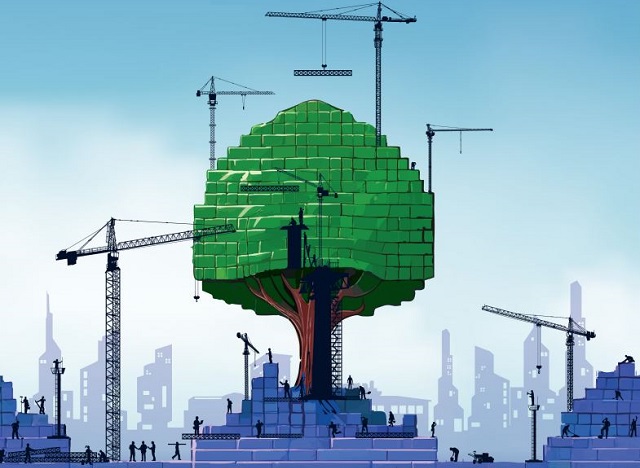
Illustrative image
|
Barriers and Opportunities for Commercialization
Despite their immense potential, carbon-negative building materials face significant challenges in commercialization. The cost of direct air carbon capture technology is considerably high, ranging from $100 to $600 per ton of CO2, creating a significant barrier to widespread adoption in the construction market.
The lack of global standards and unified definitions is another obstacle. While the Global Cement and Concrete Association (GCCA) has recommended adopting IEA definitions for low-carbon and near-zero-emission cement and using clinker-to-cement ratios specific to each country, the process of harmonizing international standards is still in development. Environmental Product Declarations (EPDs) are recommended as the basis for carbon footprint reporting, applying ISO 21930:2017 and EN 15804 for CO2 emissions treatment.
According to an OECD report from 2025, economic instruments can help governments achieve policy objectives more effectively than some forms of rigid regulation. However, designing and implementing appropriate incentive policies remains challenging, especially in developing countries with limited financial resources.
Market psychology plays a role, too, with contractors and investors hesitant to adopt new technologies. The Buildings Global Status Report 2024/2025 reveals that only 19 countries have detailed information on actions integrating construction sector strategies into their NDCs, and only two have implemented energy codes aligned with zero-emission building standards.
However, commercialization opportunities are emerging through green finance channels. UNEP FI notes a significant increase in policy and regulatory reforms worldwide, with many countries establishing net-zero financial frameworks. This led to the launch of the UN Task Force on Net Zero Policy at COP28, fostering a policy environment conducive to climate change mitigation and integrating nature-related risks into both prudential disclosure frameworks and corporate disclosures.
The expanding market for CBAM also creates investment incentives for carbon-negative materials.
Can Carbon-Negative Materials Become the Norm in Construction?
According to the “Cement and Concrete Breakthrough Priority International Actions 2024-2025” report, the global target is to make “near-zero-emission cement the preferred choice in the global market, with the efficient use and production of near-zero-emission cement established and developed in all regions of the world by 2030.”
International standards are being developed through the collaboration of multiple organizations. The Clean Energy Ministerial Industrial Deep Decarbonisation Initiative (CEM IDDI) and the IEA Working Party on Industrial Decarbonisation (IEA WPID) are working together to create a high-level mapping document that clarifies and coordinates the ongoing work of the initiatives to improve the interoperability of existing measurement methods and definitions.
Infrastructure and real estate investors play an increasingly crucial role. The World Green Building Council emphasizes that its global GBC network is ready to demonstrate that the built environment can create more resilient communities and serve as a critical climate solution. Their report also showcases how signatories to the Net Zero Carbon Buildings Commitment are implementing large-scale decarbonization.
In Vietnam, the World Bank notes that the government has made unprecedented commitments to climate resilience and the promotion of green growth, presenting a comprehensive reform agenda to green its growth and emphasizing the importance of adopting market-based, transparent, and information-sharing instruments.
The SEDP (Socio-Economic Development Plan) envisions a long-term plan that considers significant changes in the global economy, including promoting digital transformation, accelerating investment in strategic national infrastructure, and enhancing climate adaptation and mitigation.
Regionally, a report from Chatham House indicates that integrated regional action would have a far greater impact than individual countries acting alone. For example, through interconnected power transmission lines across ASEAN members or region-wide efforts to promote green technology innovation. In line with Power Development Plan 8, Vietnam will not develop any new coal-fired power projects, focusing instead on renewable energy and gas-fired power, gradually reducing the proportion of coal-fired power in the national power structure.
The update of the NDC 3.0 in 2025 will help Vietnam integrate carbon reduction targets in the construction industry into its national climate strategy.
| NDC 3.0 (Nationally Determined Contribution 3.0) is the third updated version of the nationally determined contributions under the Paris Agreement on climate change. It is the latest commitment that countries, including Vietnam, will make and submit to the United Nations in 2025, reflecting higher ambitions for reducing greenhouse gas emissions and adapting to climate change compared to previous versions. |
[1] https://globalabc.org/sites/default/files/2025-03/Global-Status-Report-2024_2025.pdf
[2] https://www.unep.org/resources/report/global-status-report-buildings-and-construction-20242025
[3] https://www.unep.org/annualreport/2023
[4] https://documents1.worldbank.org/curated/en/099092923114539690/pdf/BOSIB0296fed340a7092a708ff1846e7b87.pdf
[5] https://www.greendesignconsulting.com/single-post/carbon-negative-building-materials-a-sustainable-revolution
[6] https://www.mckinsey.com/industries/engineering-construction-and-building-materials/our-insights/decarbonizing-cement-and-concrete-value-chains-takeaways-from-davos
[7] https://gccassociation.org/wp-content/uploads/2024/12/GCCA_LowCarbon_NearZero-Cement-Definitions_Policy_Document.pdf
[8] https://airxcarbon.com/carbon-negative-material-list
[9] https://airxcarbon.com/carbon-negative-material-list
[10] https://airxcarbon.com/carbon-negative-material-list
[11] https://www.ctc-n.org/sites/www.ctc-n.org/files/resources/negative_emission_technologies.pdf
[12] https://www.ctc-n.org/sites/www.ctc-n.org/files/resources/negative_emission_technologies.pdf
[13] https://gccassociation.org/wp-content/uploads/2024/12/GCCA_LowCarbon_NearZero-Cement-Definitions_Policy_Document.pdf
[14] https://www.oecd.org/content/dam/oecd/en/publications/reports/2025/02/economic-instruments-for-a-resource-efficient-circular-economy_a0acfd50/35a7051a-en.pdf
[15] https://globalabc.org/sites/default/files/2025-03/Global-Status-Report-2024_2025.pdf
[16] https://www.unepfi.org/wordpress/wp-content/uploads/2024/12/UNEP-FI-Review-2022-2023.pdf
[17] https://breakthroughagenda.org/wp-content/uploads/2024/12/Cement-and-Concrete-Breakthrough-Priority-International-Actions-2024.pdf
[18] https://breakthroughagenda.org/wp-content/uploads/2024/12/Cement-and-Concrete-Breakthrough-Priority-International-Actions-2024.pdf
[19] https://worldgbc.org/wp-content/uploads/2023/07/WorldGBC-ANZ-Status-Report-2023_FINAL-compressed_1.pdf
[20] https://documents1.worldbank.org/curated/en/099092923114539690/pdf/BOSIB0296fed340a7092a708ff1846e7b87.pdf
[21] https://thuvienphapluat.vn/van-ban/Thuong-mai/Quyet-dinh-500-QD-TTg-2023-Quy-hoach-phat-trien-dien-luc-quoc-gia-2021-2030-tam-nhin-2050-566461.aspx
– 10:00 03/08/2025
Unlocking Profits: OCB’s Core Business Flourishes with Impressive Q4 Performance
Oriental Commercial Joint Stock Bank (HOSE: OCB) has announced its Q4 2024 financial results, reporting a robust pre-tax profit of VND 1,453 billion, and a strategic shift towards a sustainable development portfolio.
“The Shell of Success: How Seashells and Glass Contribute to a Billionaire’s Empire”
Vicostone, a leading company in the stone surface industry and owned by billionaire Ho Xuan Nang, has demonstrated a strong commitment to sustainability. The company has achieved a remarkable feat by utilizing recycled materials in 33% of its total products sold on the market, contributing to over 15% of its revenue.





